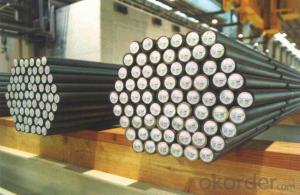Reinforced bars, often referred to as rebar, are an integral part of modern construction. They are the unsung heroes of the building process, silently providing strength and stability to the structures we inhabit daily. In this article, we will explore the importance of these bars in various aspects of construction, from their role in concrete reinforcement to their impact on the environment and the economy.
The Backbone of Concrete Structures
Imagine a world without reinforced bars. The thought is almost as terrifying as imagining a world without Wi-Fi. Concrete, while strong in compression, is weak in tension. This is where rebar comes in, acting as the backbone that supports and strengthens the concrete, allowing it to withstand the forces it would otherwise crumble under. The interplay between concrete and rebar is a beautiful example of complementary strengths, creating a synergy that results in robust and durable structures.
Versatility in Design and Application
Rebar is incredibly versatile. It can be bent, twisted, and shaped to fit the unique demands of various construction projects. From the towering skyscrapers that grace our city skylines to the humble bridges that connect our towns and villages, rebar is there, providing the necessary support. Its adaptability is a testament to the ingenuity of engineers and the flexibility of the material itself.
Sustainability and the Environment
The production of rebar is a sustainable process, as it is made primarily from steel, which is a recyclable material. This means that at the end of its life cycle, rebar can be melted down and repurposed, reducing waste and the demand for new raw materials. Moreover, the use of rebar in construction projects contributes to the creation of energy-efficient buildings, as reinforced concrete has excellent thermal mass properties.
Economic Benefits
The use of rebar in construction is not only beneficial from an engineering perspective but also from an economic one. The demand for rebar drives job creation in the steel industry, contributing to the overall economy. Additionally, the longevity of reinforced concrete structures means that they require less maintenance and have a longer lifespan, reducing long-term costs for building owners and taxpayers.
Safety and Durability
Safety is paramount in construction, and rebar plays a crucial role in ensuring the structural integrity of buildings. In the event of natural disasters such as earthquakes or hurricanes, reinforced concrete structures are better equipped to withstand the forces of nature, protecting the lives of those within. The durability of rebar also means that it can endure harsh weather conditions and resist corrosion, ensuring the long-term stability of the structures it supports.
Innovations and the Future of Rebar
As technology advances, so too does the use of rebar in construction. Innovations such as self-compacting concrete and fiber-reinforced polymers are being developed to work alongside rebar, enhancing its capabilities and pushing the boundaries of what is possible in construction. The future of rebar is bright, with new applications and technologies on the horizon that will further improve the strength and resilience of our built environment.
Conclusion
In conclusion, reinforced bars are more than just a construction material; they are the silent sentinels that guard the safety and stability of our world. From the moment they are cast into concrete, they begin their lifelong duty, supporting the weight of our cities and the dreams of our architects. As we look to the future, let us not forget the importance of these humble yet heroic bars in shaping the world we live in.

